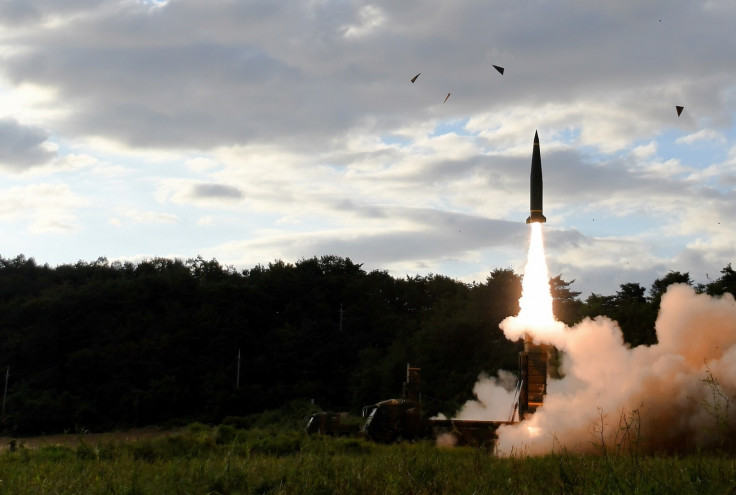South Korea fired ballistic missiles when Pyongyang's projectile was still flying
Seoul's army shot Hyunmoo-2 missiles within six minutes of the North's launch.
South Korea fired two ballistic missiles when Pyongyang's long-range projectile was still in mid-flight passing over Japanese territory. Seoul's missiles were launched under the swift orders of President Moon Jae-in to mark the country's strong response to North Korea.
In the early hours of Friday, 15 September, the North fired its longest-ever ballistic missile that travelled about 3,700km before ending up in the sea off Hokkaido. The US territory of Guam, against which the North had made a series of threats in the past, lies 3,400km from North Korea.
The launch came soon after the UN Security Council adopted a resolution imposing fresh economic sanctions, the ninth round of such measures, against North Korea. This was also the second time a North Korean missile was cruising over Japan, a close US ally.
Within six minutes of Pyongyang's missile launch, the South Korean army sent two of its Hyunmoo-2 missiles from one of its bases located near the inter-Korean border. While one of the missiles flew as predicted, the other splashed into the water "in the initial stage" of the launch, authorities told Yonhap news agency.
President Moon yet again chose strong words to condemn North Korea's actions and said dialogue with the reclusive nation is now "impossible".
"Flouting the international community's condemnations and warnings and the U.N. Security Council resolution, North Korea again fired a ballistic missile. I sternly condemn and express anger at this series of provocations by the North," said the South Korean leader, who had been insisting on easing tensions in the Korean peninsula through talks.
"Dialogue is impossible in a situation like this. International sanctions and pressure will further tighten to force North Korea to choose no other option but to step forward on the path to genuine dialogue," Moon added.
The Kim Jong-un regime tested its first-ever intercontinental ballistic missile (ICBM) in July and it was quickly followed by another launch. Then, in late August, the third-generation dictator ordered the launch of yet another long-range missile when US President Donald Trump warned of "fire and fury" against the North.
In addition to repeated missiles launches, Pyongyang had also conducted its sixth and most powerful nuclear test on 3 September worsening the situation in the region. The North is officially banned from carrying out nuclear detonations or ballistic missile launches under UN regulations.

© Copyright IBTimes 2025. All rights reserved.






















